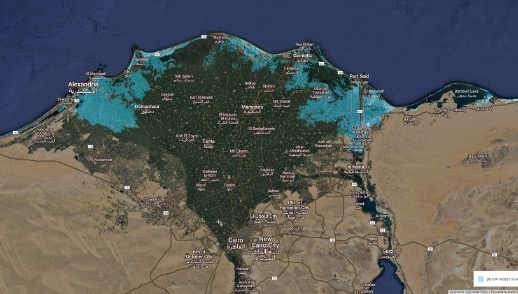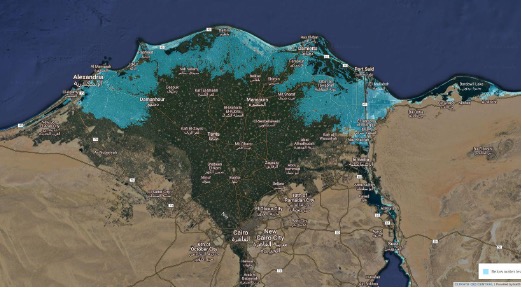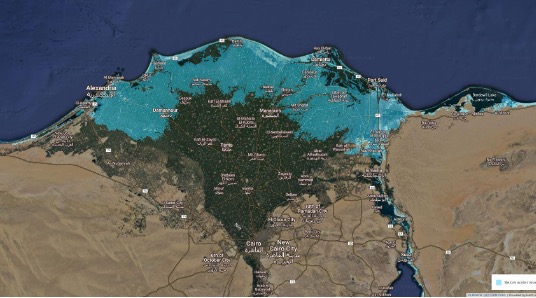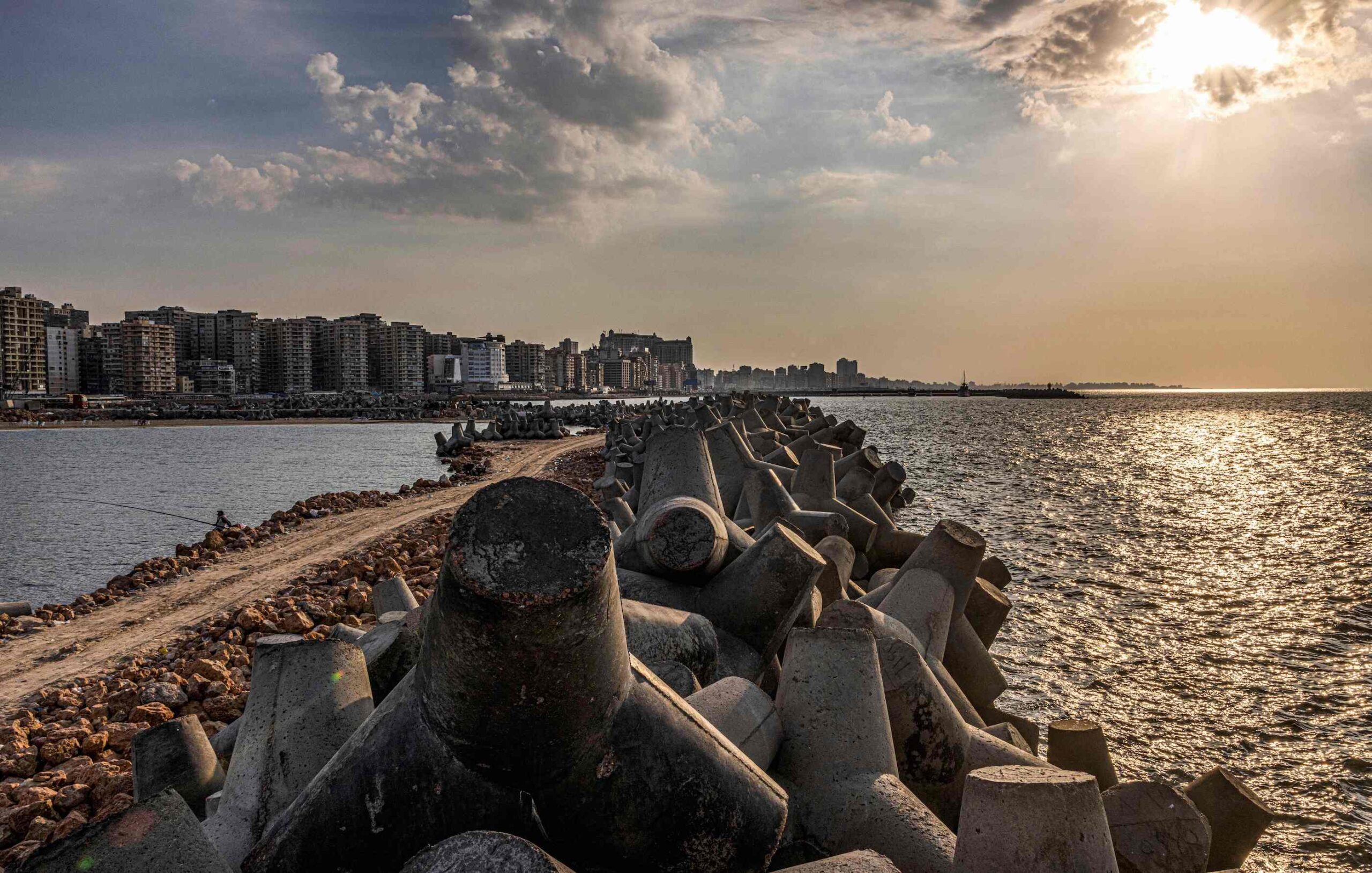Urbanism in Egypt has witnessed many temporal and spatial changes that have had both positive and negative impacts. It is like a body whose organs consist of a set of political, social, cultural, and environmental factors that move and interact with each other consistently.
Last November, the country hosted COP27, the United Nations Climate Change Conference, during which a large number of world leaders and ministers participated in discussing the energy crisis and the increase in global warming rates. At the time, I had submitted personal research to the conference through one of the organizations working on climate change in Egypt. My research covers the challenges that urbanism will face with the expected climate change in the near future—these challenges may appear as early as 2050 and are not limited to Egypt only, but also extend to most neighboring Mediterranean countries. Most studies, however, argue that Egypt will be affected the most by the increase in global warming rates, with the level of the Mediterranean Sea noticeably rising, unless immediate precautionary measures are taken. Forecasts indicate that Egypt’s coastline (Port Said – Alexandria) and other areas in the Delta governorates may sink.
This article aims to answer several questions: What is the relationship between urbanism, greenhouse gas emissions, and global warming? What are the dangers that threaten urbanism in Egypt? Will they impact Egypt in the future or has it already been affected by them?
Increased levels of greenhouse gas emissions
Global warming results from the greater concentration in the levels of some atmospheric gasses, such as methane, carbon dioxide, water vapor, tropospheric ozone, and nitrous oxide. The level of these emissions is measured by what is called the carbon dioxide equivalent, a measure that compares the level of greenhouse gas emissions to these emissions’ potential in causing global warming, all measured in gigagrams.
In 2015, carbon dioxide emissions in Egypt were at 73 percent (over 325,000 gigagrams of carbon dioxide), methane at 13 percent (the equivalent of over 41,400 gigagrams of carbon dioxide), nitrous oxide at 12 percent (38,574 gigagram of carbon dioxide equivalent), then hydrofluorocarbons (4,308 gigagrams of carbon dioxide equivalent), and fluorocarbons (3,379 gigagrams of carbon dioxide equivalent) at a rate of about 1 percent each. According to the biennial updated report by the Ministry of Environment submitted to the United Nations in 2018, these emissions increased by 40 percent compared to their levels in 2005, and the amount of carbon dioxide emissions increased from 67 percent to 73 percent in the span of 10 years. This comes to no surprise: indeed, according to World Bank statistics, carbon dioxide emissions in Egypt have been increasing consistently since 1990.
In Egypt, the energy sector produces the largest amount of greenhouse gas emissions at the rate of 64.5 percent, most of which is made of carbon dioxide (87 percent). The agricultural sector emits the second highest amount of greenhouse gasses, standing at 14.9 percent, as a result of livestock enteric fermentation, animal dung, biomass burning, and urea use. The industrial sector produces 12.5 percent of Egypt’s greenhouse gas emissions due to the chemical, mining, and metallurgical industries. Finally, the waste sector produces 8.1 percent of greenhouse gas emissions due to solid waste disposal, water treatment and disposal, incineration, and other biological treatments.
More environmental impacts
The negative effects of climate change on Egypt’s environment are not recent. For instance, temperatures were exceptionally high in 2015, reaching 46°C, which resulted in the death of about 90 people and 600 recorded cases of heat exhaustion.
From the 1970s and up until 2010, the Middle East witnessed a significant increase in temperatures: minimum temperatures increased at a faster rate than maximum ones. Based on this rapid increase, one can predict that in the future, winters will be warmer. This has already started in Egypt, as the number of cold days during the winter has decreased while the number of warm days has increased, not to mention warmer days during the rest of the year.
The challenges threatening urbanism in Egypt are not new, as the country has previously suffered from climate change: for instance, the agricultural sector was severely damaged by low temperatures in 2008, with some crops losing 50 percent of production. Moreover, in 2004, Egypt faced a damaging locust swarm along its coastline, mainly caused by a wind direction change, and in 2010, Egypt suffered of one of its worst floods, which caused the massive destruction of urban blocks in the Sinai, the Red Sea coast, and Aswan, and resulted in the death of 15 people and the displacement of about 3,500.
These recent events show that the imminent danger is foreseeably worse.
Egypt has also dealt with a rise in sea level of about 11.35 centimeters in the first half of the 20th century in Damietta and Rosetta. In the second half of the 20th century, the land in Alexandria and Port Said sank by 2 millimeters and 4 millimeters, respectively; the port city of Rosetta in the Nile Delta suffered from coastal erosion, losing some of its land. These recent events show that the imminent danger is foreseeably worse.
Three scenarios of rising sea levels
One of the most threatening effects of global warming is the rise in sea levels, which can subsequently cause the destruction of coastal areas. According to a report issued by the Intergovernmental Panel on Climate Change (IPCC), based on data from 2002 to 2017, there are three projected scenarios for the rise in the sea level: the first scenario is a one meter rise in the sea level; the second is two meters; and the third is a three meters rise.
By looking at Egypt’s coastline (Port Said and Alexandria), and the coast in the Nile Delta, we find that several features make this coastal strip vulnerable: its low topography, its soil made of clay, and the abundance of groundwater. Given the three projected scenarios, as at least one of them will inevitably happen between 2050 and 2100, it is expected that floods will result in the displacement of nearly 6 million people.
In the event of the first scenario, the one-meter sea-level rise, seven cities and 30 towns and villages in nine Egyptian governorates would be affected, as the coastal strip will drown under billions of cubic meters of seawater. These governorates are Alexandria, Ismailia, Dakahlia, Sharkia, Beheira, Port Said, Damietta, Kafr El-Sheikh, and North Sinai. The submerged areas would be of about 1,210,000 acres, while more than 35,500 acres of urban land and over 920,000 acres of agricultural land would be at risk of flooding.
If the second scenario were to happen, with a two-meter sea-level rise, nine cities and 44 towns and villages would be affected in the same nine governorates. The submerged area would be over 1,600,000 acres. In the event of the third scenario, a three-meter sea-level rise, 13 cities and 108 towns and villages in 10 governorates would be affected, and the areas at risk would be about 2,500,000 acres. The following figures show the areas at risk of flooding in the three scenarios:



Despite these expected challenges and dangers, the necessary environmental studies and preparation of plans for Egypt’s cities and villages have still not been put in place. Additionally, the Ministry of Housing, Utilities and Urban Communities has not developed any alternative plans to face the expected threats of climate change on urbanization. Instead, new urban complexes are still being built in the Delta areas next to existing cities. Egypt is yet to achieve its 1970s goal of building new urban agglomerations.
There is an urgent need for transparency and making information accessible, so that the community and civil society can participate in the decision making alongside government institutions
Egypt’s 2050 National Strategy for Climate Change mentioned several weaknesses the country suffers from that keeps it from achieving proper environmental development. These include many inhabited areas’ poor infrastructure, shortcomings in the implementation and application of laws, inadequate laws and legislations in force, lack of experience and capabilities of relevant institutions’ staff, and the lack of coordination between ministries and official bodies despite the centralization of governance in Egypt. In addition to these, there is little government funding for environmental development, a limited role for civil society and the private sector, a monopoly of government institutions in the decision-making process, and no tangible motivation for community participation.
There is an urgent need for transparency and making information accessible, so that the community and civil society can participate in the decision making alongside government institutions, ending the latter’s monopolization in this matter. Likewise, the processes of establishing new urban communities in the Delta areas must be halted and moved to safer areas in Egypt. Urban alternatives must also be developed in the event of disasters. For this, the different sectors involved in these processes must develop new codes for environmental plans that are compatible with new variables, reconsider existing laws and relevant legislation, and allow access to the public domain to reorganize them.
Ibrahim Ezzeldin is a planning engineer and urban researcher at the Egyptian Commission for Rights and Freedoms (ECRF) who works on the right to adequate housing and against forced eviction.
